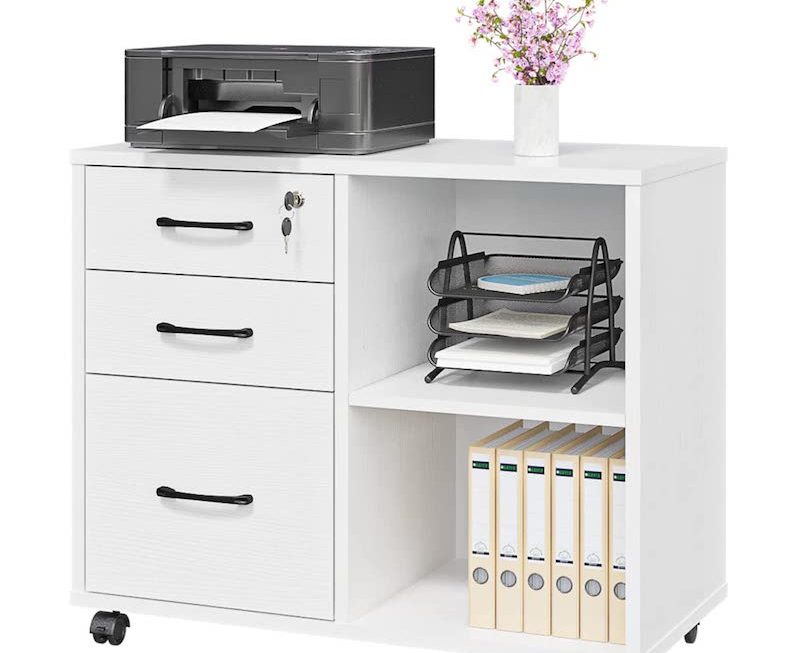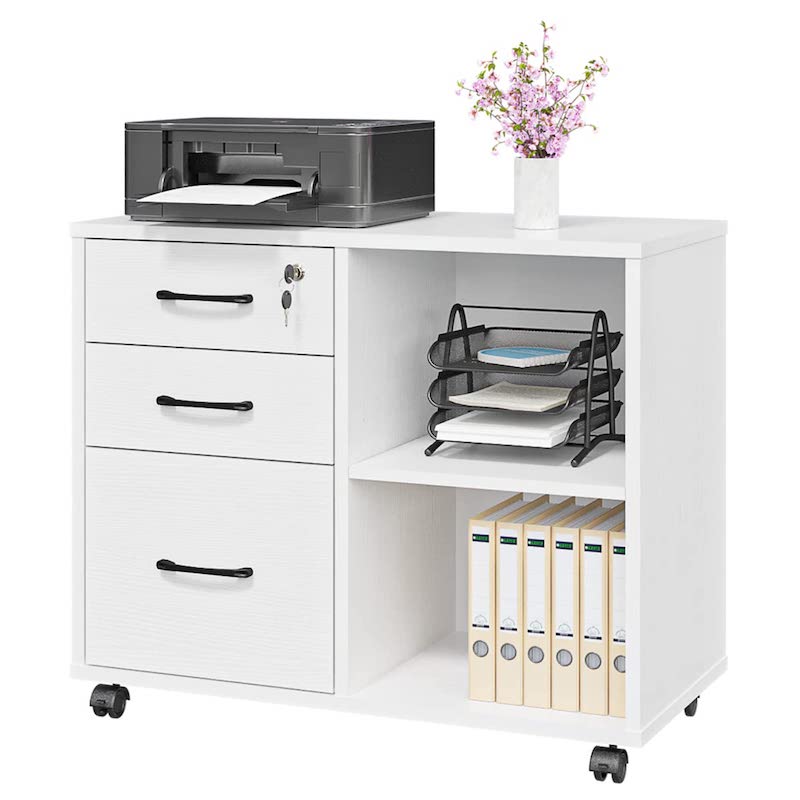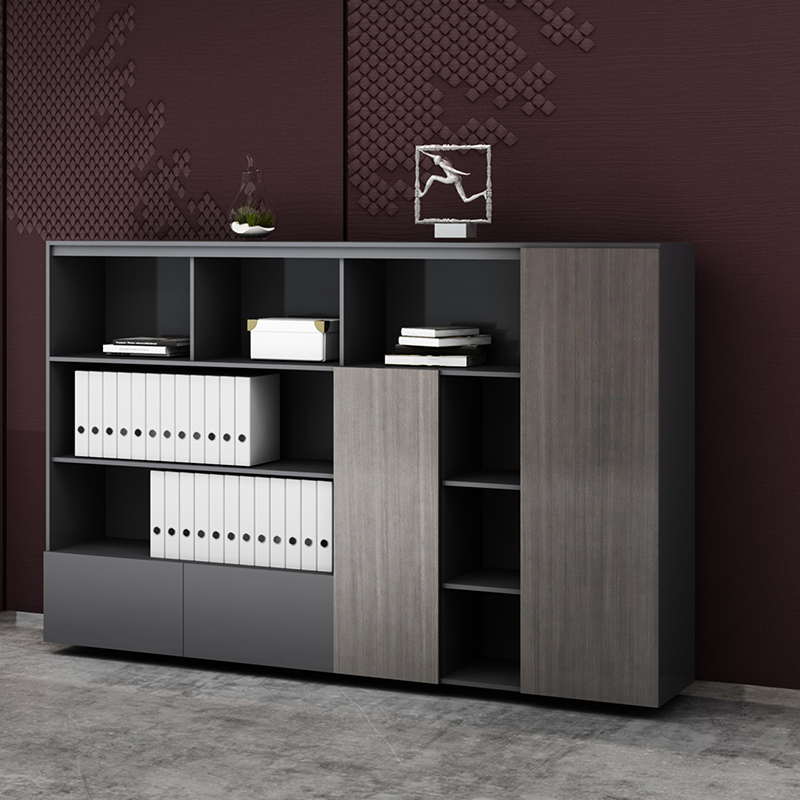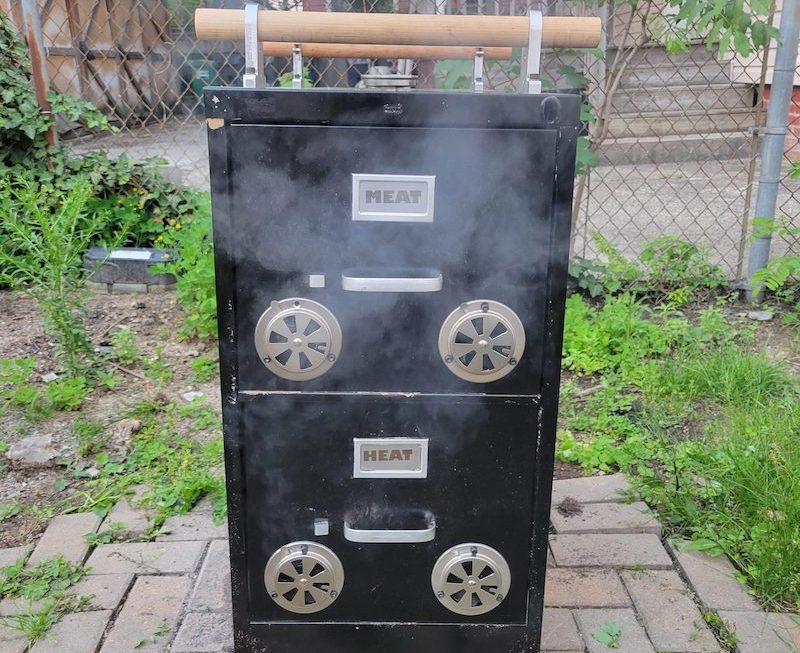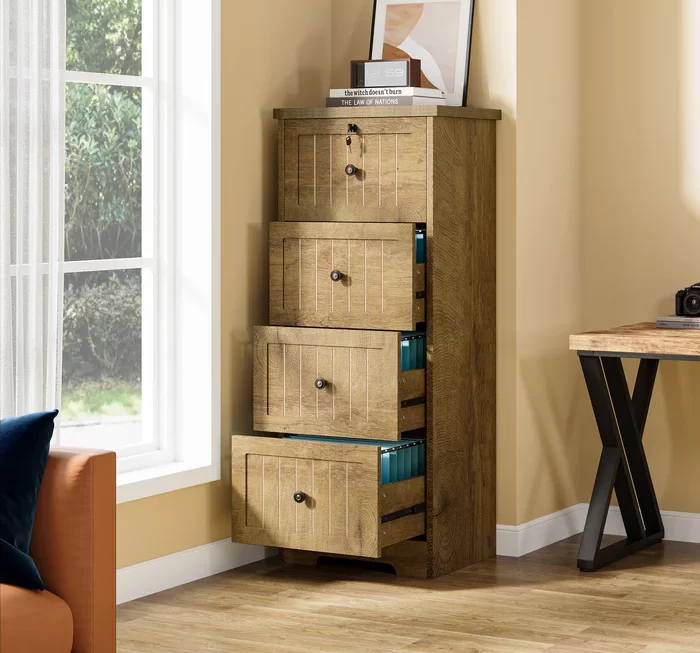Types of Office Filing Cabinets
Choosing the right office filing cabinet is crucial for keeping your workspace organized and efficient. Let’s explore the various types available, each with unique features and benefits that can cater to different organizational needs.
Vertical Filing Cabinets
Vertical filing cabinets are space savers, ideal for smaller offices. Usually tall and narrow, they offer deep drawers to accommodate a significant amount of paperwork. You can organize files front to back, making them easy to access. They also come in various heights, which means you can select a model that fits neatly under your desk or against a wall.
Lateral Filing Cabinets
Lateral filing cabinets are broader and often shorter than their vertical counterparts. They are perfect for larger files or when you need to store files side by side. This design facilitates quick viewing and retrieval of documents, making them suitable for high-volume filing systems. They can also serve as additional work surfaces or stand-ins for space dividers.
Mobile Filing Cabinets
Mobile filing cabinets offer maximum versatility. Fitted with wheels, they’re easily movable, allowing you to reconfigure your office layout as required. They’re typically more compact, fitting under most desks, and are a great option if you need to transport files between different areas of an office frequently.
Fireproof and Secure Filing Cabinets
Fireproof and secure filing cabinets provide an extra layer of protection for sensitive documents. They are engineered to withstand intense heat and often come with advanced locking mechanisms. These cabinets are essential for storing legal papers, confidential business documents, and other important items that require additional security against theft or disaster.
Incorporating the keyword ‘office filing cabinet’, we covered the essential types that could suit varying business needs. Whether you have limited space or require advanced security, there is an office filing cabinet designed to meet those requirements. Identify which type aligns with your storage needs, office size, and document security levels to maintain an effective organizational system.
Choosing the Right Filing Cabinet for Your Office
Selecting an ideal office filing cabinet requires examining specific factors linked to your business needs. Here we’ll focus on important aspects that determine the best choice for your workplace.
Assessing Your Storage Needs
Start by gauging the volume of files you need to store. Think about both current documents and future growth. Categorize items to determine the need for separate compartments or special features.
Considering the Size and Layout of Your Office Space
Measure your available room before deciding on a filing cabinet. Consider how it will integrate with your desk and ensure it does not impede movement. The right choice fits well and supports workflow.
Material and Durability
Office filing cabinets come in metal, wood, or a combination of both. Choose a material that withstands daily use and matches your office’s aesthetic. Durable materials last longer, offering better value over time.
Locking Mechanisms and Security Features
For sensitive documents, prioritize secure cabinets with advanced locks or digital keypads. Consider cabinets with multiple locking options for maximum security and peace of mind in safeguarding your vital documents.
Setting Up Your Filing System
An efficient filing system is key to making the most of your office filing cabinet. Here’s how to set up a filing system that keeps your documents organized and quickly retrievable.
Categorizing Your Documents
Start by sorting your documents into clear categories. Use broad groups first, such as ‘Financial’, ‘HR’, and ‘Operations’. Then, break these down into sub-categories if needed. This makes finding files easier.
Implementing a Labeling System
Next, create a consistent labeling system. Use color coding, numbers, or alphabets to mark each category. Labels should be easy to read. They help you spot the right files fast.
Ensuring Ease of Access
Place frequently used files within easy reach. Think about your office’s workflow. You’ll want to keep active files close by, while archiving older documents to avoid clutter.
Maintaining Your Filing System
Maintaining your system is crucial. Set a schedule to review and update files regularly. This prevents pile-ups and keeps your filing system effective.
Use these strategies to organize your space with the right office filing cabinet. You’ll save time and reduce stress in your workday.
Innovative Filing Cabinet Features
Modern office environments demand more than just storage solutions; they require innovative features that enhance efficiency and functionality. As we delve into some of the latest advancements in office filing cabinet design, you’ll discover how these can streamline your organizational systems.
Built-in Organization Accessories
Today’s office filing cabinets come equipped with clever built-in accessories designed to simplify your filing process. Features such as adjustable dividers, file followers to keep papers upright, and inset trays for small items are now standard. This allows for better customization of spaces within your cabinet, ensuring each item has a designated place.
Anti-tilt Mechanisms and Safety
Safety can’t be overlooked when choosing an office filing cabinet. Many cabinets now boast anti-tilt mechanisms, which prevent more than one drawer from being opened at a time. This reduces the risk of the cabinet tipping over, providing a safer work environment. Look for cabinets with robust locks and sturdy construction to further enhance safety and security.
Filing Cabinet Aesthetics and Customization
Gone are the days when office filing cabinets were dreary and purely utilitarian. Nowadays, there’s a focus on aesthetics, with options to match every office decor. From sleek, modern designs to classic wood finishes, you can choose a cabinet that complements your office style. Moreover, manufacturers offer customization options like color choices, handle designs, and even the installation of cushioned tops to serve as impromptu seating or additional workspace.
Managing Digital and Paper Files Together
In today’s tech-driven world, managing both digital and paper files effectively is a challenge.
Integrating Filing Cabinets with Digital Systems
Integrating an office filing cabinet with digital systems requires a strategic approach. Start by installing software that links physical file locations to digital directories. This creates a bridge between the two formats. Invest in scanners to convert paper documents to digital. Store them in a cloud service for easy access. Clearly label physical documents that have a digital copy. This prevents duplication of effort.
Best Practices for Hybrid Filing Systems
For a smooth hybrid filing system, consistency is key. Follow these best practices:
- Use the same naming conventions for both paper and digital files.
- Regularly update both systems to reflect current files.
- Train staff on both systems to avoid confusion.
- Keep backup copies of important files in both formats.
- Schedule regular audits to ensure the system’s efficiency.
By following these tips, you’ll ensure a seamless flow between paper and digital files. This maximizes efficiency and minimizes the risk of lost or misplaced documents.
Maximizing Office Space
An office filing cabinet is not just a stationary fixture—it’s a dynamic part of your work environment. Smart selection and placement can perfectly optimize office space, offering a clutter-free and more productive area for employees. Here’s how you can maximize the available space in your office with the right filing solutions.
Space-Saving Filing Solutions
When it comes to utilizing office space efficiently, consider space-saving filing cabinets. Vertical filing cabinets are ideal for this purpose. Their tall and narrow design takes up less floor space, which is perfect for smaller offices. Another option is wall-mounted filing systems, which leverage vertical space and free up the floor for other uses.
Using multipurpose furniture can also save space. For instance, a lateral filing cabinet not only stores files but can serve as an additional workspace or meeting table top. Furthermore, consider mobile filing cabinets that can be tucked away when not in use or moved to create temporary space for other activities.
Shared storage options, like community filing cabinets placed in central locations, foster a collaborative environment. They allow for easy access and are a great way to keep shared documents at hand without eating into individual workspace.
Additionally, using filing systems that double as room dividers enables you to define separate areas within an open office layout, while still providing ample storage. Not only does this approach maximize space, it also adds to the aesthetic appeal of the office environment.
Remember, the office filing cabinet you choose can either add to the congested areas or contribute to a well-organized, spacious office. Always prioritize flexibility and functionality to provide a comfortable workspace that motivates and aids employee productivity.
Eco-Friendly Filing Options
In a world where sustainability is becoming increasingly important, choosing eco-friendly office filing cabinets is a wise move. Eco-conscious businesses can reduce their carbon footprint and promote a greener office by selecting the right filing solutions. Let’s explore the options available.
Sustainable Materials
Look for office filing cabinets made from sustainable materials. These can include recycled metal, reclaimed wood, or certified sustainable forests. Using rapid renewable materials like bamboo also contributes to green efforts. Such materials not only help conserve natural resources but also reduce waste.
Manufacturers that follow eco-friendly practices often use less toxic finishes and glues. This results in lower emissions of volatile organic compounds (VOCs), which is better for both the environment and workplace health. Always check for relevant certifications that indicate a product’s environmental impact.
Recycling and Upcycling Old Cabinets
If you already have office filing cabinets that you’re looking to replace, consider recycling them. Metal cabinets can often be taken to scrap yards where they’ll be melted down and reused. For wooden cabinets, repurposing them into shelves, planters, or other furniture is a great way to give them a new life.
Upcycling is another trend gaining momentum. Creative modifications can transform outdated cabinets into stylish and functional pieces. This not only saves the cabinets from landfills but also adds a unique touch to your office decor.
By prioritizing eco-friendly filing options, businesses can take an active role in protecting the environment while still maintaining an efficient and organized workspace. Choose sustainability, and let your office reflect your commitment to the planet.
